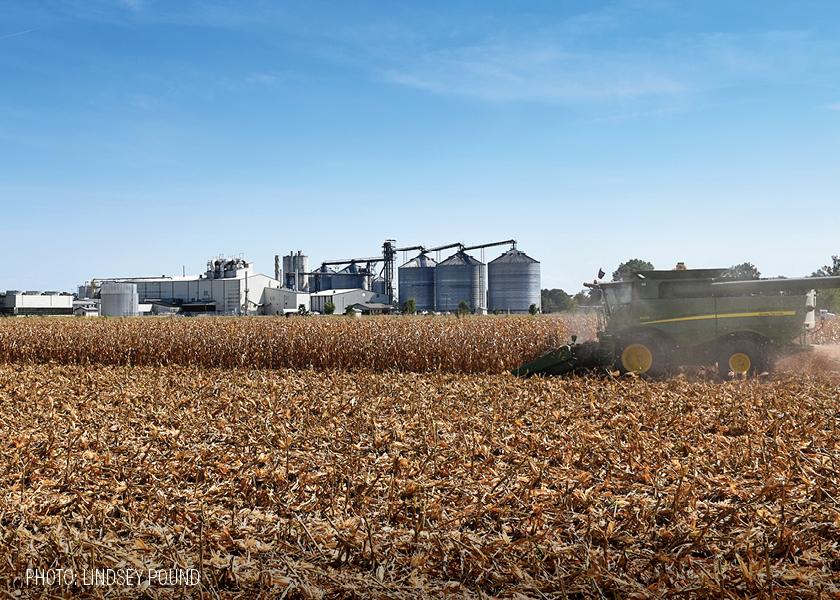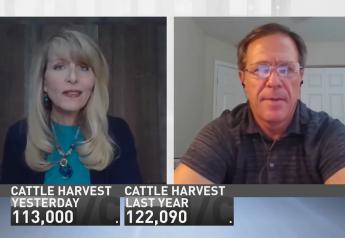USDA Now Says The U.S. Lost 1.6 Million More Acres Of Corn In 2022, Where Did They Go?

USDA’s January reports tend to produce surprises, and Thursday was no different. A few surprises came out of USDA reports, including a 1.6-million-acre drop in U.S. corn acres. As a result, the U.S. crop balance sheets continued to tighten.
The news fed the bulls, with both corn and soybean prices on the CME seeing double-digit gains.
Other highlights of USDA’s January reports include:
- A 1 bu. per acre increase to U.S. corn yield, now at 173.3 bu. per acre
- A 0.7 bu. per acre drop to the 2022 U.S. soybean yield, now at 49.5 bu. per acre
- 11% increase in winter wheat acreage estimates
- Lowered both corn and soybean export estimates
- Decline in both Argentine’s 2023 corn and soybean production estimates
- USDA still pegs record crops in Brazil
Looking at the final 2022 production estimates from USDA, the major surprise was the drop in U.S. corn acres. So, where did the corn acres go? University of Missouri agricultural economist Ben Brown believes it wasn’t a miscalculation by USDA, instead, he thinks USDA underestimated the impact of drought on corn acres this year.
“If we take a look at where those acres fell, it came really in the drought-sensitive areas or drought-impacted areas. For example, Kansas was down 710,000 acres, Nebraska is down 480,000, South Dakota is down to under 40,000 acres,” he says.
QUICK TAKE: January Supply & Demand report from USDA:
Corn Yield: December-172.3 bu/acre, Now-173.3 bu/acre
Soybean Yield: December-50.2 bu/acre, Now-49.5 bu/acre pic.twitter.com/c92DGfpy3n — AgDay TV (@AgDayTV) January 12, 2023
Brown says you have to keep in mind that corn or sorghum cut for silage isn’t counted in USDA’s harvested acreage estimate.
“If I'm looking out into Kansas, and I'm thinking about what the story is in Kansas, hay was at a premium, grassland was at a premium," he says. "They didn't have hardly any feed wheat, they didn't have hardly any feed corn. And so, my guess is that for some of those acres, especially dryland acres that just looked really poor, they got chopped for silage to provide forage for those cattle.”
Essentially, Brown says, the corn acres didn't go away, they probably got turned into silage, which by definition, is a failed acre.

Brown says when you remove a portion of those drought-impacted acres from the equation, it also leads to a higher national yield. He says that’s exactly what USDA showed in the January report this week.
“When all said and done, production actually increased,” says Brown. “However, the acreage or the bushel per acre increase in yield wasn't enough to counteract that decrease in harvested acres, and we saw production fall 200 million bushels.”
Brown says the supply side on corn did shock the market. While some analysts expected USDA’s latest revisions to loosen the tight crop balance sheets in the U.S., the opposite happened, as ending stocks remain tight.
“We're going to continue to see demand challenges, just in terms of lack of supply, and in terms of competition around the globe,” says Brown. “So, USDA offset some of these production revisions by reductions in demand. Those are reductions I didn't necessarily think we'd get this month. I thought we'd see even more reductions in February, and I still think USDA has a little bit more to go in terms of demand changes for our crop. But certainly, right now are at least, while demand declined, production revisions offset that demand and we tightened stocks even further.”
Brown thinks ethanol is an area that has room for revision. He points to the challenging month of December for ethanol demand as reason for USDA to possibly make downward revisions to ethanol demand.
The Big Supply Surprise in Wheat
Another surprise? Winter wheat seedings. USDA showed an 11% jump in the number of acres seeded in winter wheat for the 2023 crop year. USDA’s estimate came in above what traders and the market anticipated, which sent wheat prices lower on Thursday. However, Brown questions how many of those acres will be harvested.
Change in winter wheat seedings across the US is expected up 11% from 2022 to 36.950 million acres. State break downs below. pic.twitter.com/ZIWOUCYmG4 — Ben Brown (@BenBrownMU) January 12, 2023
“When we look across the board, a lot of states are up but as I like to remind folks here in Missouri, we were projected last year in January to be at about 860,000 acres. For the for the year, we finished 630,000 acres this year,” he says. “We're estimated 860,000. Where do we shake up at the end? That's a good question.”
Brown says between areas still struggling with moisture this fall, which resulted in a difficult time getting a stand, as well as the fact wheat is used as a cover crop in some Midwestern states, he thinks the winter wheat acreage number will change from the initial estimate.







